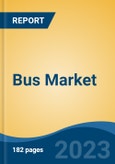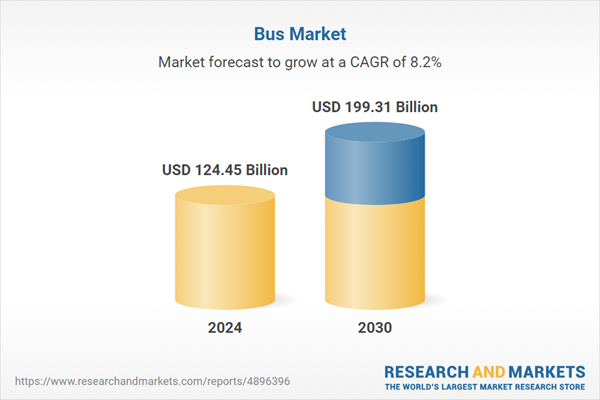Speak directly to the analyst to clarify any post sales queries you may have.
10% Free customizationThis report comes with 10% free customization, enabling you to add data that meets your specific business needs.
Key Market Drivers
Rising Urbanization and Demand for Public Transport
Urbanization is a major force propelling the global bus market forward. As cities expand and populations concentrate in urban areas, the need for efficient, accessible, and affordable public transportation systems becomes critical. In 2024, India's urban population stands at 461 million, growing at 2.3% annually, with cities expected to contribute 75% of the nation's income by 2031. Buses serve as a backbone of urban transit, offering flexible routes, high passenger capacity, and lower infrastructure costs compared to rail systems. Governments and municipalities are increasingly prioritizing investments in bus networks to alleviate traffic congestion, reduce travel time, and improve mobility.This trend is especially pronounced in emerging economies across Asia, Latin America, and Africa, where rapid urban development is outpacing the expansion of private vehicle infrastructure. Public transport authorities are expanding bus fleets, introducing high-capacity bus rapid transit (BRT) systems, and enhancing service frequency to accommodate the growing urban population. The role of buses in providing first- and last-mile connectivity to other transport modes such as metro and rail also enhances their importance in comprehensive mobility planning. As a result, rising urbanization continues to be a foundational driver for long-term bus market growth worldwide.
Key Market Challenges
High Initial Cost of Electric and Advanced Buses
One of the most significant challenges in the global bus market is the high upfront cost associated with electric and technologically advanced buses. While electric buses offer long-term savings in terms of fuel and maintenance, their initial purchase price is considerably higher than that of conventional diesel or CNG buses. This cost disparity is primarily due to the expensive battery systems and advanced power electronics required for electric vehicles. Additionally, the integration of autonomous driving technologies, telematics, and safety systems further escalates the capital expenditure. For many public transport operators, especially in developing countries, these high costs are a major barrier to fleet modernization.Even with government subsidies and financial incentives, many transit agencies face budgetary constraints and are unable to invest in large-scale procurement of electric or autonomous buses. The total cost of ownership, while favorable in the long run, does not always align with short-term budget cycles and political timelines. Furthermore, local manufacturers in emerging economies may lack the technological expertise or production scale to offer competitively priced electric buses, creating a reliance on imports and increasing overall procurement costs. As a result, cost-related challenges continue to slow the pace of technological adoption across the global bus industry.
Key Market Trends
Surge in Demand for Connected and Smart Buses
A major trend reshaping the global bus market is the integration of connectivity and smart technologies into buses. Modern buses are increasingly being equipped with advanced telematics, GPS tracking, onboard diagnostics, passenger information systems, and Wi-Fi connectivity to enhance both operational efficiency and commuter experience. These features allow fleet operators to monitor vehicle health in real-time, reduce downtime through predictive maintenance, and optimize routes based on traffic and passenger data. In India, Gujarat State Road Transport Corporation (GSRTC) implemented an Integrated Vehicle Tracking and Passenger Information System across its fleet of over 8,000 buses in early 2024.GPS devices enable real-time monitoring of location, speed, route adherence, and schedule compliance. From a passenger standpoint, smart buses offer conveniences such as real-time arrival updates, digital ticketing, mobile app integration, and even infotainment systems. Governments and city planners are promoting smart mobility solutions to build intelligent transportation ecosystems, especially within urban areas. This trend is closely aligned with the broader rise of smart cities, where integrated data systems and Internet of Things (IoT) networks are used to improve public services. The proliferation of 5G technology is further expected to accelerate this trend by enabling faster and more reliable data exchange between vehicles and infrastructure. As commuters increasingly expect seamless, technology-enhanced travel experiences, connected and smart buses are becoming a standard rather than a luxury, reshaping fleet upgrades and procurement decisions across global markets.
Key Market Players
- Mercedes-benz Group Ag
- Ab Volvo
- Byd Motors Inc.
- Jiangling Motors Co. Group
- BAIC Group
- Xiamen King Long Motor Group
- Shanghai Automotive Industry Corporation
- Changan Automobile Group
- Dongfeng Motor Corp.
- Yutong Bus Group
Report Scope:
In this report, the Global Bus Market has been segmented into the following categories, in addition to the industry trends which have also been detailed below:Bus Market, By Fuel Type:
- Diesel
- Electric
- Hybrid
- Others
Bus Market, By Seating Capacity:
- Up to 30 Seats
- 31-50 Seats
- More than 50 Seats
Bus Market, By Application:
- Intercity
- Intracity
Bus Market, By Length:
- Up to 6-8 Meters
- 8-10 Meters
- 10-12 Meters
- Above 12 Meters
Bus Market, By Region:
- North America
- United States
- Canada
- Mexico
- Europe & CIS
- France
- United Kingdom
- Italy
- Germany
- Spain
- Asia-Pacific
- China
- Japan
- India
- South Korea
- South America
- Argentina
- Brazil
- Middle East & Africa
- South Africa
- Saudi Arabia
- UAE
- Turkey
Competitive Landscape
Company Profiles: Detailed analysis of the major companies present in the Global Bus Market.Available Customizations:
With the given market data, the publisher offers customizations according to a company's specific needs. The following customization options are available for the report.Company Information
- Detailed analysis and profiling of additional market players (up to five).
Table of Contents
Companies Mentioned
- Mercedes-benz Group Ag
- Ab Volvo
- Byd Motors Inc.
- Jiangling Motors Co. Group
- BAIC Group
- Xiamen King Long Motor Group
- Shanghai Automotive Industry Corporation
- Changan Automobile Group
- Dongfeng Motor Corp.
- Yutong Bus Group
Table Information
| Report Attribute | Details |
|---|---|
| No. of Pages | 180 |
| Published | August 2025 |
| Forecast Period | 2024 - 2030 |
| Estimated Market Value ( USD | $ 124.45 Billion |
| Forecasted Market Value ( USD | $ 199.31 Billion |
| Compound Annual Growth Rate | 8.1% |
| Regions Covered | Global |
| No. of Companies Mentioned | 10 |









